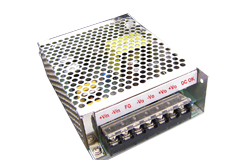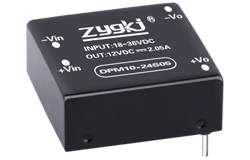news
Building a 120 Volt AC Power Supply for 3 Volts DC Conversion
Author: ZYG Power Module Time: 2023-4-24
Introduction
A power supply is an electronic device that is used to convert one form of electrical energy into another form. It is an essential component of any electronic device that requires electrical power. In this article, we will discuss how to build a 120-volt AC power supply for 3-volt DC conversion.
Components Required
The following components are required to build a 120-volt AC power supply for 3-volt DC conversion:
1. Transformer
2. Diodes
3. Capacitors
4. Resistors
5. Voltage Regulator
6. LED
7. Breadboard
8. Wires
9. Soldering iron
10. Multimeter

Step-by-Step Guide
1. Transformer: The first step is to choose a transformer that can convert 120-volt AC to 3-volt AC. You can use the following formula to calculate the voltage rating of the transformer:
Secondary = Vprimary / N
Where Vprimary is the voltage rating of the primary winding, Vsecondary is the voltage rating of the secondary winding, and N is the turns ratio.
2. Diodes: The next step is to connect four diodes in a bridge rectifier configuration. The diodes are used to convert AC voltage into DC voltage. The bridge rectifier configuration ensures that the output voltage is always positive.
3. Capacitors: The next step is to connect two capacitors in parallel across the output of the bridge rectifier. The capacitors are used to smooth out the DC voltage.
4. Resistors: The next step is to connect a resistor in series with the LED. The resistor is used to limit the current flowing through the LED.
5. Voltage Regulator: The next step is to connect a voltage regulator to the output of the capacitors. The voltage regulator is used to regulate the voltage to 3 volts DC.
6. LED: The next step is to connect an LED in series with the resistor. The LED will indicate when the power supply is on.
7. Breadboard: The next step is to connect all the components on a breadboard. A breadboard is a device used to build and prototype electronic circuits.
8. Wires: The next step is to connect the components on the breadboard using wires. The wires should be of the appropriate gauge and length.
9. Soldering Iron: The next step is to solder the components on the breadboard. Soldering is a process of joining two metal surfaces using a soldering iron and a solder wire.
10. Multimeter: The final step is to test the power supply using a multimeter. The multimeter is used to measure the voltage and current of the power supply.
Conclusion
In this article, we have discussed how to build a 120-volt AC power supply for 3-volt DC conversion. We have discussed the components required and the step-by-step process to build the power supply. It is important to remember that electronic circuits can be dangerous and should only be attempted by those who have the necessary knowledge and experience.
relevant information
-
2023-4-20
how to wire ac to dc power supply
Introduction: If you intend to power a device that requires DC power supply, but you only have access to an AC power source, then you need to convert AC to DC. This can be done by using an AC to DC power supply. AC to DC power supply conversion is a relatively simple process, but it requires the proper tools and knowledge. In this guide, we will show you how to wire AC to DC power supply step by step. Step 1: Determine the Power Requirements The first step in wiring AC to DC power supply is to determine the power requirements of your device. You need to know the voltage, amperage, and wattage of the device. For example, if...
View details -
2023-11-7
Fully Modular Power Supply: The Perfect Solution for Efficient Cable Management
Introduction: Cable management is a crucial aspect of building a computer system. It ensures that all cables are organized and neatly tucked away, preventing clutter and improving airflow. One of the key components that can aid in efficient cable management is a fully modular power supply. In this article, we will explore the benefits of a fully modular power supply and how it can revolutionize cable management in computer systems. What is a Fully Modular Power Supply? A fully modular power supply is a type of power supply unit (PSU) that allows the user to detach and attach all cables individually. Unlike semi-modular or non-modular power supplies, where some cables are permanently attached, fully modular power supplies provide flexibility in...
View details -
2023-5-2
AC-DC Converter Module: The Key to Efficient Power Conversion
AC-DC converter modules are crucial elements in the world of power electronics. They are devices that convert alternating current (AC) power into direct current (DC) power, which is necessary for powering electronic devices such as computers, mobile phones, and home appliances. AC-DC converter modules are widely used in various applications, ranging from power supplies for consumer electronics to industrial power systems. The importance of AC-DC converter modules lies in their ability to efficiently convert AC power into DC power. The efficiency of the conversion process is crucial as it affects the amount of power that is lost during the conversion. The higher the efficiency of the converter, the lower the amount of power that is wasted as heat, and the...
View details -
2023-5-29
SPM Series AC-DC Converter: Efficient Power Conversion for Your Applications
When it comes to powering electronic devices, the importance of efficient power conversion cannot be overstated. An efficient power converter can not only save energy but also increase the lifespan of the device by preventing it from overheating. The SPM Series AC-DC Converter is a reliable solution for a wide range of applications that require efficient power conversion. Overview of SPM Series AC-DC Converter The SPM Series AC-DC Converter is a high-performance power supply that is designed to convert AC input voltage into a regulated DC output voltage. The converter is available in a wide variety of input and output configurations, making it suitable for a broad range of applications. With its high efficiency and low standby power consumption, the...
View details -
2023-4-24
Building a 120 Volt AC Power Supply for 3 Volts DC Conversion
Introduction A power supply is an electronic device that is used to convert one form of electrical energy into another form. It is an essential component of any electronic device that requires electrical power. In this article, we will discuss how to build a 120-volt AC power supply for 3-volt DC conversion. Components Required The following components are required to build a 120-volt AC power supply for 3-volt DC conversion: 1. Transformer 2. Diodes 3. Capacitors 4. Resistors 5. Voltage Regulator 6. LED 7. Breadboard 8. Wires 9. Soldering iron 10. Multimeter Step-by-Step Guide 1. Transformer: The first step is to choose a transformer that can convert 120-volt AC to 3-volt AC. You can use the...
View details -
2023-6-14
Bidirectional DC-DC Converter: A Comprehensive Guide
A bidirectional DC-DC converter is a device that allows for power to be transferred between two DC power sources, such as a battery and a power grid, in either direction. This type of converter has become increasingly popular in recent years, particularly in the automotive and renewable energy industries. One of the main advantages of a bidirectional DC-DC converter is its ability to improve the efficiency of energy storage systems. These systems typically require a DC-DC converter to manage the flow of energy between the storage battery and the load, such as an electric vehicle or a home energy system. In a bidirectional converter, the same device can be used to charge or discharge the battery, depending on the needs...
View details


















